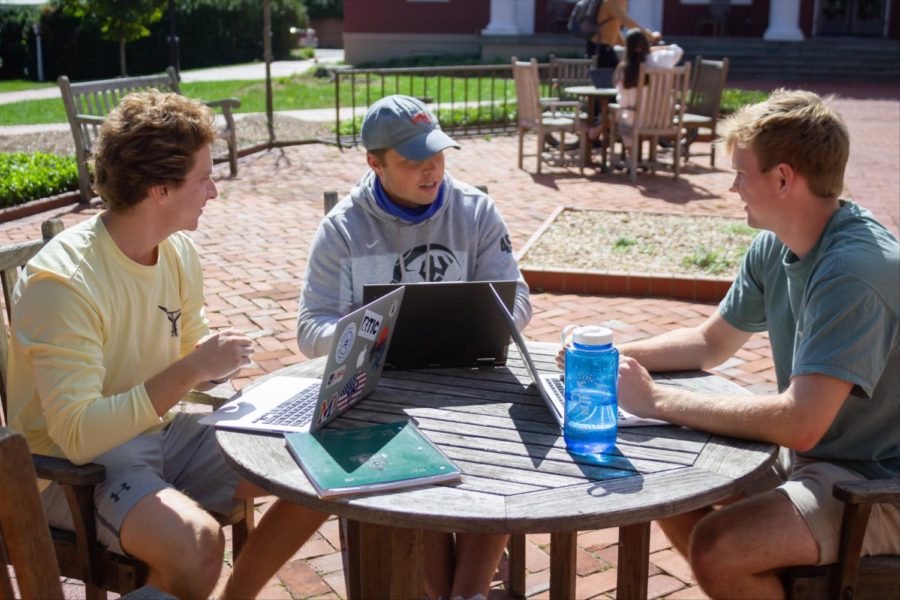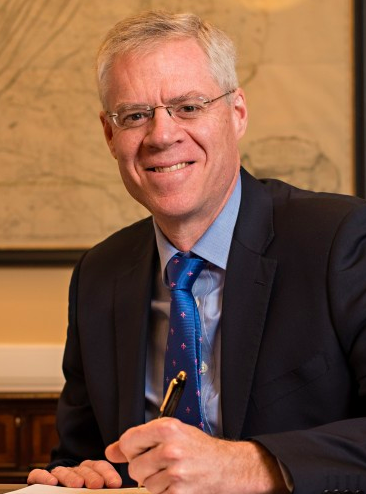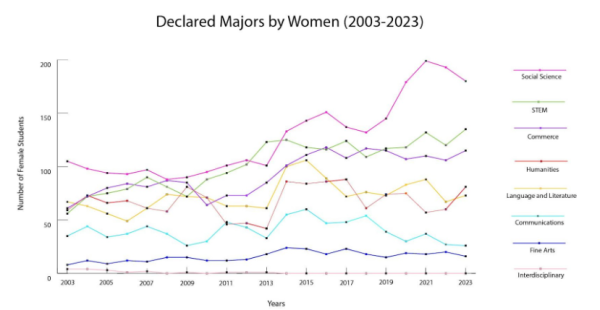New general education curriculum cuts test-out options, emphasizes interdisciplinary studies
The April 2022 updates promote diversity and eliminate swim and language tests
Required courses will focus more on skills, not subjects, allowing students more flexibility.
October 27, 2022
Future Washington and Lee students will no longer be able to test out of general education courses before stepping foot on campus, according to new curriculum guidelines adopted by faculty in April 2022. Instead, every student will take all required courses at the university — but checking off the boxes will be much easier.
Fewer courses are required under the new general education curriculum. The ones that remain are more interdisciplinary and diversity-focused, emphasizing skills instead of specific subjects. Proficiency tests, including the swim test and language tests, have been cut from the curriculum.
“We want general education to emphasize work done on campus,” said Andrea Lepage, professor of art history and co-chair of the General Education Development Committee (GEDC), the group responsible for creating the new guidelines. The swim test, for example, “seems to be reflecting work done before arriving on campus,” Lepage said. But it could still be required by a different facet of the university, she said.
High school credits can still count towards graduation, just not towards fulfilling general education. Before, some students would arrive at Washington and Lee with a significant amount of outside credit and others would arrive with none, said Katharine Shester, economics professor and the other co-chair of GEDC. This change “evens out” the starting point, Shester said.
Students will also not be able to test out of the language requirement before arriving on campus. Instead, every student will be required to take two language courses in a Washington and Lee classroom.
The last significant revision of the general education curriculum happened in 2004, according to the GEDC’s March 2022 final report. The outdated FDR system “does not align with the University’s mission,” the report said. “In particular, we could do a better job preparing citizens for ‘engaged citizenship in a global and diverse society’ and responsible and humane leadership.”
Many of the changes adopted in the new curriculum simply reflect the work already being done on campus, Lepage said. But other changes were aim to bring the university up to speed with peer institutions.
Washington and Lee did not previously require diversity-related courses like its peers, Lepage said. Under the new requirements, students will complete a “DE&I Passport” filled with experiences like panels or projects focused on diversity, equity and inclusion. Students are also required to take six credits of “cultural context” courses.
“Our mission commits us to prepare all students to be responsible leaders and engaged citizens in a global and diverse society, so some exposure to the issues of diversity and inclusion is an important element of the general education curriculum,” President Will Dudley said in an email about the updated requirements.
Focusing on diversity is especially important for Washington and Lee, “because of our history, and because of current events,” professor Paul Gregory, member of the GEDC, said.
Making diversity an explicit part of the general education curriculum shows that “we value it as a university,” Gregory said. “We want to make that a conscious, systematic part of general education.”
In their sophomore year, students will take a “perspectives seminar” analyzing how various identities shape systems in America and abroad.
Students will also be required to take a first-year writing seminar, replacing WRIT100, focused on a “big question,” like power, or a “wicked problem,” like climate change. This seminar launches a three-course “pathway” where students explore a topic from three different subject vantage points.
The main goal is to encourage students to take more classes outside of their major track. Before, the focus “had just been like, ‘tick off these boxes,’” Gregory said. Instead, “Let’s build a system where students are forced to make connections. But the connections that they’re making can be the ones that they want to make, within a certain scaffolding.”
To help build these connections, the new required categories are much broader — focusing on skills instead of subjects. Categories like math and sciences are out, while courses in “Ethical Reasoning” and “Historical Perspectives” are in.
“The titles are less discipline-specific, but they articulate the skills, abilities and dispositions that students want and need, parents want and need, and employers want and need,” Shester said.
For example, the old curriculum required a fine arts course. Now, those classes fall under the “creative-making” category. “Creative-making expresses a little better what students are actually doing in those classes,” Lepage said.
Every first-year student will be required to participate in a pre-orientation trip, too. Dean Kim Hodge, who runs Leading Edge, said only three or four more trips will need to be added to fit every first-year student for summer 2023.The program will be free for every student, Hodge said.
Every aspect of the revisions went through compromise and conversation, Lepage and Shester said. Some of the proposals made in the GEDC final report were not adopted by the faculty, such as the category of “wellness” instead of physical education, or a required reflections portfolio.
“Almost everything we proposed was seen by some subset of faculty, and not always the same subset, as, ‘Wow, that’s a lot more work than we currently do,’” Gregory said. “That stuff got sliced out.”
Some departments feared that the lack of requirements would put them at a disadvantage, Gregory said.
“The worry is ‘well, if my course isn’t required, what if students don’t take them?’” he said.
Gregory says the changes will not “massively hurt” any department. “The very integrative nature of what we’ve proposed will have students branching out.”
The GEDC tried to capture student feedback while making changes. But many students on campus were unaware of these changes altogether.
“I think students did not see that it would be affecting them much,” Gregory said. “So that makes it hard to get students involved.”
No student on campus right now will have to follow the updated requirements, Lepage said. The faculty is currently voting to appoint three members to the implementation committee, who will be tasked with classifying courses and moving the new system forward — which could take a significant amount of time.
“Major overhauls don’t happen often,” Shester said. “The curriculum we make now could last for two decades, so it’s so important we get it right.”














James Lake • Oct 29, 2022 at 5:14 pm
Why abolish the swimming test? Proficiency in a basic skill that could save a student’s life would seem to be a good thing.